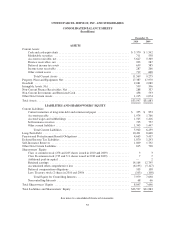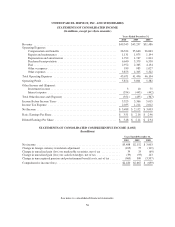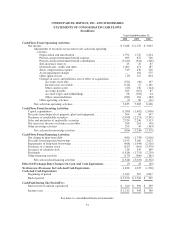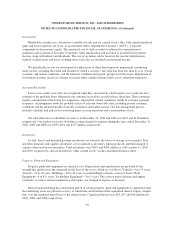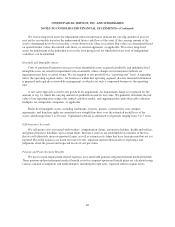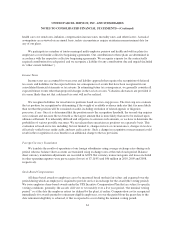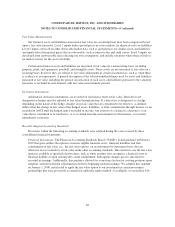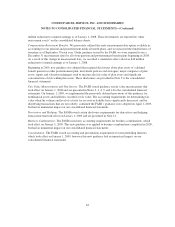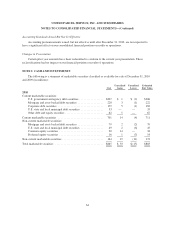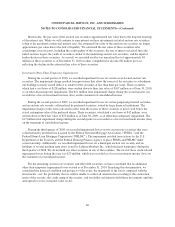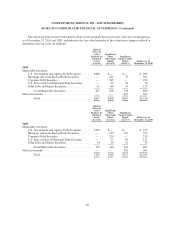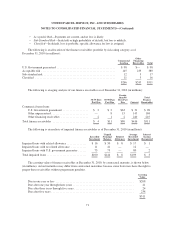UPS 2010 Annual Report Download - page 74
Download and view the complete annual report
Please find page 74 of the 2010 UPS annual report below. You can navigate through the pages in the report by either clicking on the pages listed below, or by using the keyword search tool below to find specific information within the annual report.UNITED PARCEL SERVICE, INC. AND SUBSIDIARIES
NOTES TO CONSOLIDATED FINANCIAL STATEMENTS—(Continued)
Fair Value Measurements
Our financial assets and liabilities measured at fair value on a recurring basis have been categorized based
upon a fair value hierarchy. Level 1 inputs utilize quoted prices in active markets for identical assets or liabilities.
Level 2 inputs are based on other observable market data, such as quoted prices for similar assets and liabilities,
and inputs other than quoted prices that are observable, such as interest rates and yield curves. Level 3 inputs are
developed from unobservable data reflecting our own assumptions, and include situations where there is little or
no market activity for the asset or liability.
Certain non-financial assets and liabilities are measured at fair value on a nonrecurring basis, including
property, plant, and equipment, goodwill, and intangible assets. These assets are not measured at fair value on a
recurring basis; however, they are subject to fair value adjustments in certain circumstances, such as when there
is evidence of an impairment. A general description of the valuation methodologies used for assets and liabilities
measured at fair value, including the general classification of such assets and liabilities pursuant to the valuation
hierarchy, is included in each footnote with fair value measurements present.
Derivative Instruments
All financial derivative instruments are recorded on our balance sheet at fair value. Derivatives not
designated as hedges must be adjusted to fair value through income. If a derivative is designated as a hedge,
depending on the nature of the hedge, changes in its fair value that are considered to be effective, as defined,
either offset the change in fair value of the hedged assets, liabilities, or firm commitments through income, or are
recorded in AOCI until the hedged item is recorded in income. Any portion of a change in a derivative’s fair
value that is considered to be ineffective, or is excluded from the measurement of effectiveness, is recorded
immediately in income.
Recently Adopted Accounting Standards
Provisions within the following accounting standards were adopted during the years covered by these
consolidated financial statements:
Financial Instruments: The Financial Accounting Standards Board (“FASB”) issued guidance in February
2007 that gives entities the option to measure eligible financial assets, financial liabilities and firm
commitments at fair value (i.e., the fair value option), on an instrument-by-instrument basis, that are
otherwise not accounted for at fair value under other accounting standards. The election to use the fair value
option is available at specified election dates, such as when an entity first recognizes a financial asset or
financial liability or upon entering into a firm commitment. Subsequent changes in fair value must be
recorded in earnings. Additionally, this guidance allowed for a one-time election for existing positions upon
adoption, with the transition adjustment recorded to beginning retained earnings. We adopted this standard
on January 1, 2008, and elected to apply the fair value option to our investment in certain investment
partnerships that were previously accounted for under the equity method. Accordingly, we recorded a $16
62





